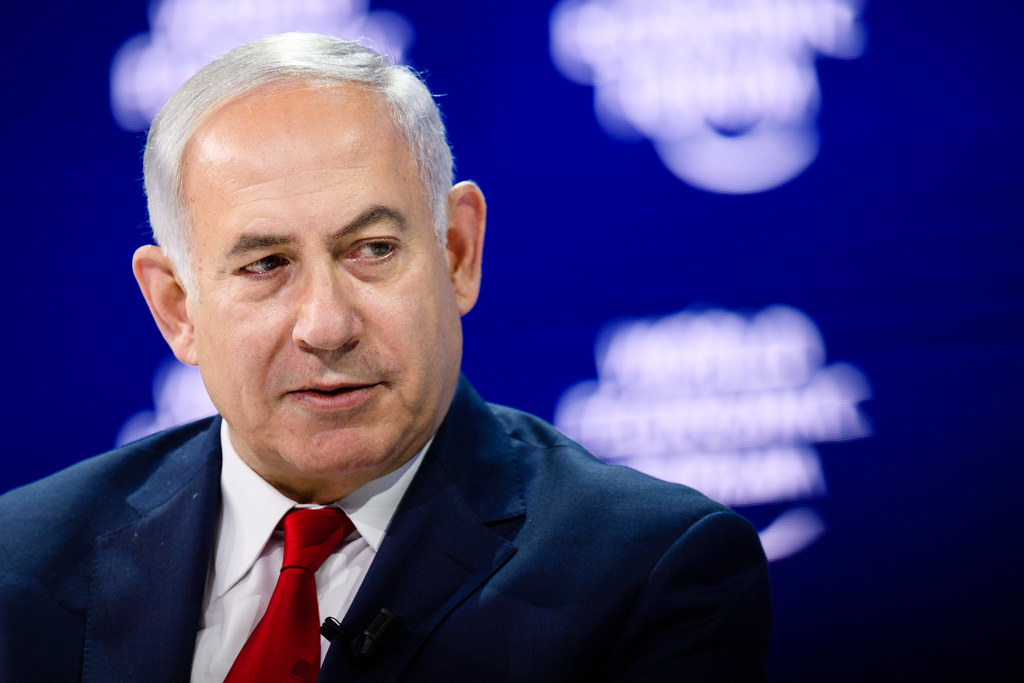An Exercise in Cynicism: Why Netanyahu Empowered Hamas Despite Being Warned Not To Trust Them

Benjamin Netanyahu’s tenure as Israel’s Prime Minister is marked by a distinctive political strategy, aimed at creating a wedge between the two prominent Palestinian factions: Hamas and the Palestinian Authority (PA).
This strategy has had lasting implications on the ground, shaping the trajectory of the Israeli-Palestinian conflict. Below, we delineate this strategy from its inception to its repercussions, journeying from simpler to more complex dimensions.
The Basic Premise
At the heart of Netanyahu’s strategy was a simple but potent idea: keep Hamas and the Palestinian Authority divided to prevent the establishment of a Palestinian state. This tactic aimed to inhibit any united front from the Palestinian side that could potentially challenge Israeli objectives.
Initiation: Engaging with Hamas
The first step involved opening channels of communication with Hamas, traditionally seen as a terror group. Through indirect negotiations, primarily facilitated by Egypt, Israel began to engage with Hamas. Notably, a significant shift occurred when Israel allowed an influx of Qatari funds into Gaza, aimed at maintaining a fragile ceasefire. This policy, part of a broader strategy, was defended by Netanyahu as a means to keep Hamas and the PA divided, thus stymieing the advancement of a Palestinian state.
Operationalization: Economic Levers
A notable part of this strategy was the increment in work permits for Gazan laborers to work in Israel. This economic lever was not just about ensuring a flow of money into Gaza for stability but also about subtly bolstering Hamas’s standing vis-a-vis the PA. By the end of Netanyahu’s fifth government in 2021, approximately 2,000-3,000 work permits were issued to Gazans, a number that soared to nearly 20,000 since Netanyahu returned to power in January 2023.
Under the Surface: The Unspoken Doctrine
On the surface, these policies seemed benign or even constructive, but underneath lay an unspoken doctrine of treating the PA as a burden and Hamas as an asset. This narrative became an understood policy direction, aiming to create a dichotomy of power between Hamas in Gaza and the PA in the West Bank. For instance, far-right MK Bezalel Smotrich, the finance minister in the hardline government, vocalized this sentiment in 2015.
Ignoring the Warning Signs
Warnings from various quarters, notably Egypt, began to surface indicating a looming threat from Hamas. However, these warnings seemed to fall on deaf ears as the Israeli government continued with its strategy. An Egyptian intelligence officer highlighted Israel’s failure to anticipate Hamas terror attacks despite the warnings, indicating a significant oversight.
The Repercussions: Violent Escalations
The crescendo of this strategy was reached with the eruption of violent confrontations between Israel and Hamas. The policy that intended to empower Hamas to counterbalance the PA had now fostered a formidable adversary. This scenario manifested starkly in the 10-day war in 2021, where the carrot-and-stick approach towards Hamas faced substantial scrutiny.
Invalidation of the Strategy
The recent attack by Hamas significantly invalidated Netanyahu’s entire strategy. Netanyahu, for placing trust in a terrorist organization known for mass murder and destruction, appeared naive and foolish. The repercussions of this miscalculation have left Israel reeling, a state that will likely persist for decades as the nation grapples with the fallout of this perilous gamble.
A Perilous Gamble
In hindsight, the strategy not only jeopardized Israeli security but also exacerbated the animosity between Israel and the Palestinian factions. The hope for a peaceful resolution to the enduring conflict seemed to be engulfed in the flames of violence that soared across the skies.
Through this exploration, the nuanced layers of Netanyahu’s strategy unfold, revealing a saga of political machinations that, while aimed at securing a tactical advantage, sowed the seeds of heightened animosity and violence.
Bibliography:
- Times of Israel. “For years, Netanyahu propped up Hamas. Now it’s blown up in our faces.” www.timesofisrael.com.
- The Jerusalem Post. “Netanyahu: Money to Hamas part of strategy to keep Palestinians divided.” www.jpost.com.
- Al-Monitor. “Netanyahu’s strategy strengthens Hamas.” www.al-monitor.com.
- India Tribune. “For years, Netanyahu propped up Hamas as counter to Palestinian.” indiatribune.com.
- New York Post. “Israel ignored warning ‘something big’ was coming: Egyptian official.” nypost.com.
- Reuters. “Israel’s security forces face questions after Hamas attack.” www.reuters.com.
- Foreign Policy. “Israel-Hamas War: Netanyahu’s Road to Declaring War.” foreignpolicy.com.

